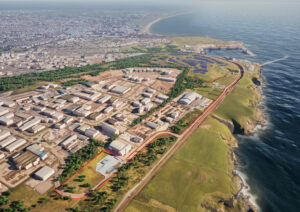New battery can offer up to 10,000 error-free cycles
Researchers are developing a new battery that can offer a safe and more environmentally friendly alternative to the traditional lithium-ion battery.
Although lithium-ion batteries are currently the preferred method for electrifying our transport fleets, there are some concerns over their safety as well as concerns about the environmental impact of mining the precious metals needed for their production.
Based on these concerns, researchers at Cornell University, New York have set out to find a new technique that can be used on a wider scale.
By incorporating aluminium into the battery the researchers found that they could create a rechargeable battery that offers up to 10,000 error-free cycles.
One of the advantages of aluminium is that it is abundant in the earth’s crust. It is also light meaning it has a high capacity to store more energy than many other metals.
However, it is difficult to integrate aluminium into the battery’s electrodes, it reacts chemically with the glass fibre separator, which physically divides the anode and the cathode, causing the battery to short circuit and fail.
The researchers’ solution to this was to design a substrate of interwoven carbon fibres that form an even stronger chemical bond with the aluminium. When the battery is charged, the aluminium is deposited into the carbon structure via covalent bonding, i.e., the sharing of electron pairs between aluminium and carbon atoms.
In related news, Beatrice Browning, PhD researcher at the Faraday Institution writes for Air Quality News about the potential value of second-life batteries for energy storage.
An EV battery is generally considered to be ‘end-of-life’ when its capacity has declined to approximately 80% of its original value.
However, these spent batteries are now attracting attention from battery manufacturers and start-up companies, with their significant remaining capacity offering huge potential for use in a secondary application.
Due to the current economic and infrastructural issues faced of widespread lithium-ion battery (LiB) recycling, the second life battery (SLB) market provides a promising opportunity to deal with early generations of spent EV batteries — particularly in stationary energy storage (SES) applications.
Photo Credit – Pixabay

















Al-air batteries were hailed as revolutionary and just around the corner 6 years ago, how big is this corner and when will they be commercially available?
Dr Jeff Dahn who conducts battery research on behalf of Tesla, in Sept 2020 he talked along with Prof Lukas Swan about 2 million mile batteries that won’t degrade for 10,000 charge cycles if not fully charged and discharged to 100% and 0% which most drivers don’t do and if batteries are charged 25-50% they could last for 15,000 charge cycles, Tesla has rejected v2g ( vehicle to grid ) storing power in it’s Model cars from national grids due to battery degradation but is now talking about v2g from electric school buses, grid storage, ferries and hybrid aircraft. Jeff Dahn talks about v2g, ferries and hybrid planes 28-34 mins in Energy Storage & Sustainable Engineering with Lukas Swan and Jeff Dahn video on youtube 26 Sept 2020..